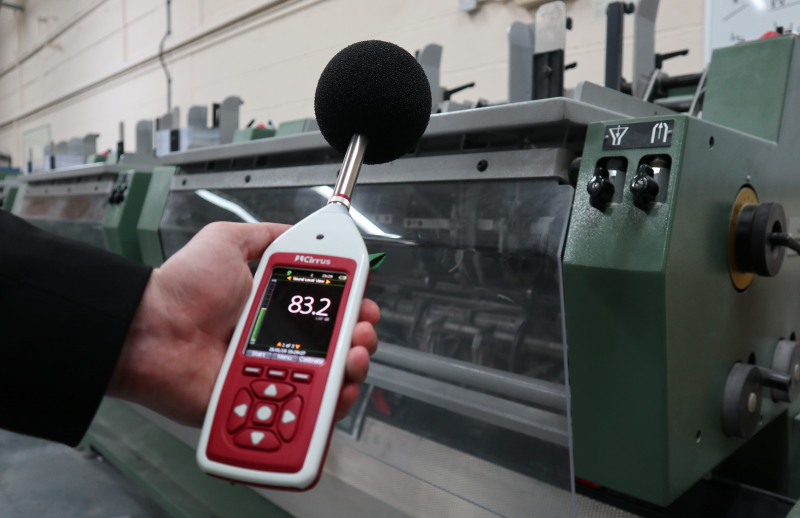Hearing Conservation Program
OSHA 1910.95 requires a hearing conservation program when an employee’s Time Weighted Average (TWA) is equal to or exceeds 85 dBA. The guideline also stipulates that employees exposed to 90 dBA of noise or greater that it is mandatory for them to wear hearing protection and further states that engineering controls should be used for exposures over 100 dBA TWA. We will make sure you company is in compliance with OSHA 1910.95.
Noise-induced hearing loss (NIHL) is an irreversible and permanent occupational hazard but is preventable with an effective hearing conservation program. Based on a 2011-2012 CDC study involving hearing tests and interviews with participants, at least 10 million adults (6 percent) in the U.S. under age 70—and perhaps as many as 40 million adults (24 percent)—have features of their hearing test that suggest hearing loss in one or both ears from exposure to loud noise.
An industrial audiologist or CAOHC (Council for Accreditation in Occupational Hearing Conservation) certified technician will evaluate your employees hearing. All test results, case history forms, problematic audiograms and work-related determinations are then reviewed by a doctor of audiology.
Our goal is to provide the most efficient and effective services possible saving your company time and money by using our onsite service. An additional goal is for us to minimize the work you will need to do to follow OSHA’s 1910.95. Any questions or concerns you have about your programs needs will be addressed by an audiologist.

Our Process for Onsite Hearing Conservation Services:
- Testing in our van, trailer or your facility is available. With our testing system and multiple mobile testing units we can average a minimum of 25 employees to as many 100 employee tests per hour. Each test group takes 10 minutes or less.
- We use state of the art audiometers that can provide instructions in 16 different languages and monitors the environment for ambient noise to ensure the recorded hearing levels are recorded at the quietest levels possible and meet OSHA’s requirement for permissible ambient noise levels.
- Otoscopic examination is performed for employees who exhibit a Standard Threshold Shift (STS) and for those who complain of ear discomfort or pain while we are onsite.
- Immediate on-site retesting for all Standard Threshold Shifts (STS) hopefully reducing the need for further follow up testing
- All test reviews and interpretations are done by a doctor of audiology
- Notification and Test results provided for each employee while we are onsite with a detailed explanation.
- Detailed reports within 3-5 business days and with included follow up instructions. We want to take the guess work out for you and make you job easier!
- Hearing conservation training and education available through video or classroom style meeting OSHA’s requirement.
- Custom hearing protection is available for those who cannot find a suitable hearing protection device in a standard format.
- Record keeping and cloud data storage
Hearing Protection Fit Testing
Fit testing of employee’s hearing protection (best practice) ensures that they are fit properly to receive the correct amount of protection. It is a field test that is a precise individual measurement; whereas, Noise Reduction Rating(NRR) is not!
Over protecting or Under protecting an employee is detrimental to their work function.
Using and going by the Noise Reduction Rating (NRR) is not sufficient for proper hearing protection. Fit testing provides each employee a Personal Attenuation Rating (PAR) which is specific to them.
Two main approaches to using Fit Testing:
- Proactive Approach: test all employees annually with their hearing test or set it up as a separate event.
- Reactive Approach: test as needed especially for Standard Threshold Shifts (STS) or employee concerns
It is an excellent guide for recommending hearing protection as well. Testing takes only a few minutes for each employee and provides documentation of their personal attenuation rating (PAR).

Noise Surveys and Auditing
Noise Surveys involve two types of noise monitoring: an area noise survey using a sound level meter, and personal noise dosimetry using noise dosimeters. In addition, we can audit your current Hearing Conservation Program to confirm it complies with OSHA standards and make recommendations to bring your program into compliance.
On-site services include:
- Noise monitoring
- Hearing test data review
- Data analysis to identify trends
- Review calibration documentation
- Evaluate equipment performance
In-House Occupational Hearing Programs
If your company has an in-house hearing testing program, we can collaborate to provide the essentials:
- Test review and interpretation by a doctor of audiology
- Easy-to-read reports that include all essential OSHA-required forms
- Cloud data storage of reports
- Calibration of audiometers
